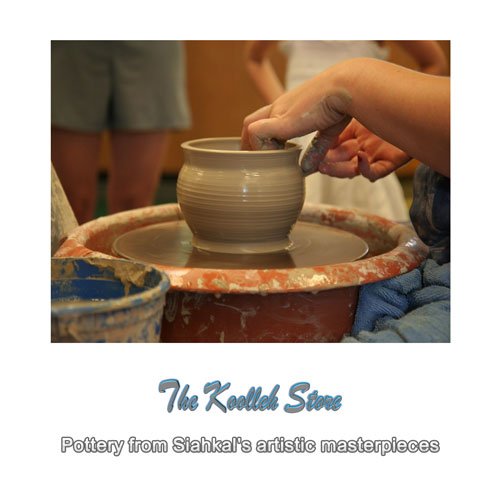Pottery from Siahkal’s artistic masterpieces

Pottery is one of the artistic masterpieces of Siahkal city. One of the oldest human industries is pottery, which according to most researchers and with the support of objects obtained from archaeological excavations, was born in Iran and has spread from our country to other parts of the world.
It was perhaps the first man-made industry from soil. Evidence from the discovered artifacts indicates the fact that pottery in Iran began in the eighth millennium BC. The people of that time, in addition to agriculture for daily work and religious ceremonies, made various objects that after centuries of evolution and the discovery of fire became pottery. Pottery is made like clay with secondary soils that are less pure due to displacement and have a lower degree of curing.
In 6000 BC, the first signs of the emergence of kilns were seen in the pottery industry. In 3500 BC, a simple pottery wheel was made that was turned by hand. The advent of the potter’s wheel revolutionized the industry. With the beginning of the Islamic era, due to the spirit of simplicity and far from luxury, as well as for economic reasons, more attention was paid to the pottery industry.
Although the decorative aspect of the designs used on these dishes is fundamental, it has been far more important to the builders and those who use them than to the decoration.
Artists have preserved and spread this original industry by preserving the native originality and have tried to take useful steps by improving the quality of materials and designs and consuming pottery products in cities in addition to its rural and native consumption.
Currently, pottery is one of the most prominent and famous handmade products in Iran and their preparation and production is almost common in most rural areas and even many urban areas of our country.
Making all kinds of consumer products with artistic features is common in many parts of the country and areas such as Siahkal (in Gilan province), Lalejin (in Hamadan province), Mandganabad village (in Khorasan province), Meybod district (in Yazd province), Zanuz district ( In East Azarbaijan province), Joybar (in Mazandaran province) as well as the cities of Qom, Tehran, Tabriz, Shahreza, Saveh, Karaj, Estahban, Natanz and Isfahan are among the main centers of Iranian pottery.
The products of the potters of these areas, while having consumption aspects in the place of production and meeting most of the local needs, are sent to Tehran and other cities of the country. Ceramics and pottery produced in some regions have export aspects and are well received in world markets.
Reza Alizadeh, Director General of Cultural Heritage, Handicrafts and Tourism of Gilan, described pottery as one of the native and ancient handicrafts of Gilan and added: Prehistoric pottery works in the Marlik, Siahkal and Amlash regions are among the masterpieces of art.
He pointed out that pottery is common in most parts of Gilan, especially in Rudsar, Talesh, Siahkal, Shaft and Soomehsara. Tanur is produced in Gilan villages such as Jirdeh in Shaft, Larser in Soomehsara and also various dishes with new designs in Siahkal.






